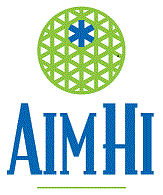Outstanding guidance from this recently released Consensus Statement of the National Association of EMS Physicians International Association of Fire Chiefs and the International Association of Chiefs of Police on best practices for collaboration between law enforcement and emergency medical services during acute behavioral emergencies.
Two of the principal authors of the National Consensus Statement, Drs. Kupas and Miller, will be presenting an overview of the paper at the upcoming EMS Law and Policy Symposium on Medical Civil Rights in Emergency Services. The Symposium will be held this Thursday, November 7th, at the Widener University Commonwealth Law School in Harrisburg, PA.
Symposium registration is free, and the program will be available remotely via Zoom.
In addition to a discussion of the new Consensus Statement, the Symposium will also include attorneys from the litigation team on the Elijah McClain case in Colorado, and representatives of the Harvard-affiliated Medical Civil Rights Initiative. For more information and to register, visit:
https://commonwealthlaw.widener.edu/current-students/law-school/events/detail/3516/
------------------------------------
Consensus Statement of the National Association of EMS Physicians International Association of Fire Chiefs and the International Association of Chiefs of Police: Best Practices for Collaboration Between Law Enforcement and Emergency Medical Services During Acute Behavioral Emergencies
https://pubmed.ncbi.nlm.nih.gov/39264840/
There must be an awareness of the potential for bias such as anchoring bias, ascertainment bias, and confirmation bias. We must make a conscious effort at an independent assessment of the individual. The goal is to optimize the individual’s safety with the minimal use of force or restraint, yet still provide for the safety of first responders and bystanders.
Medical Evaluation
The potentially competing priorities of LE and EMS also need to be recognized and addressed as part of conjoint education and training to ensure collaboration in the assessment and any required clinical treatment of these individuals.
Optimally, LE should give a short, objective summary to EMS on the circumstances of the encounter. This summary should include the reason for the encounter, pertinent observed behaviors, medical history that may have been volunteered by the individual or bystanders, descriptions of any use of force and/or the use of less lethal weapons that may have been employed, as well as any other potential sources of trauma.
Emergency medical services must have access to the patient for clinical assessment, which may require transition from LE positioning and restraints to medical positioning and restraints. Law enforcement may provide input on the threat posed by transitions so that the team can collaborate to arrive at the safest solution that allows for the provision of any needed clinical care.
Foremost is the need to identify and treat a potentially life-threatening medical condition, including, but not limited to, hypoxia, hypoglycemia, metabolic derangements, hyperthermia, cardiac conditions, and trauma. The EMS clinicians must also be cognizant of possible toxidromes as a potential cause of the patient’s behavior, which may require immediate treatment.
Restraints and Patient Positioning
A decision to utilize pharmacologic management shall be made solely by EMS based upon their independent patient assessment and in strict accordance with EMS protocols and medical director oversight.
Transport
In some cases, LE may choose to transport the individual either to a medical facility or directly to a facility for legal remand. In these situations, it is important – when indicated – that EMS be utilized as a resource in these decisions. Although EMS clinicians may be asked by LE to evaluate an individual prior to transport to a detention facility, they should not provide a medical “clearance” without a complete clinical assessment.
Some of these individuals require advanced medical assessment and interventions not available to EMS. In situations when EMS is transporting, LE and EMS should ensure there are sufficient personnel with the appropriate scope of practice to address medical contingencies and continue any required physical restraint during transport. The monitoring and care in this setting should be delineated by EMS agency protocols and policies.

